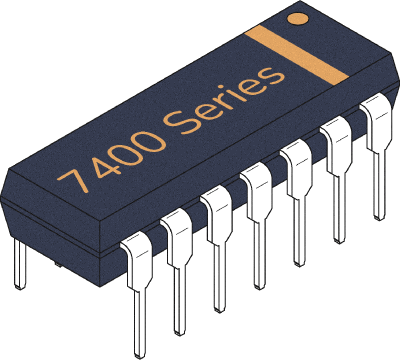The 74HC595 is a shift register with 8 bits. It’s a serial-in, parallel-out register which means you add data into it serially, and you get the data out from it in parallel. This is particularly useful for expanding the number of output pins available in a microcontroller like an Arduino.
In this guide, you’ll learn everything you need to know about this chip in order to use it in your own projects.
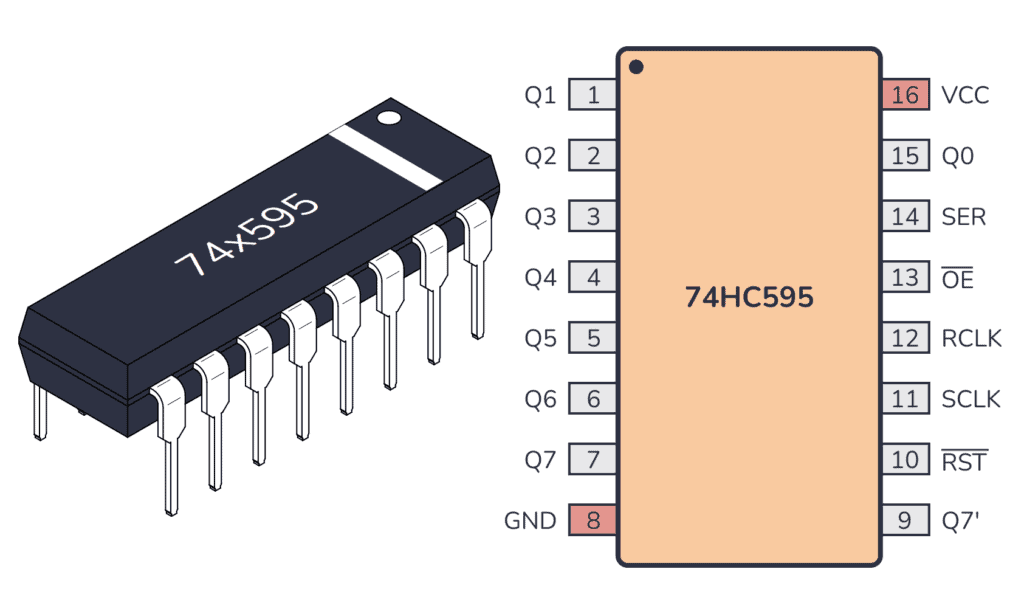
What does the 74HC595 do?
The 74HC595 is an integrated circuit (IC) that gives you an 8-bit serial-in parallel-out shift register.
Data can be shifted in serially (one by one), for example from an Arduino pin. And you can get those 8 bits of data in parallel (all at once) from its 8 outputs. This chip is often used to add more output pins to a microcontroller.
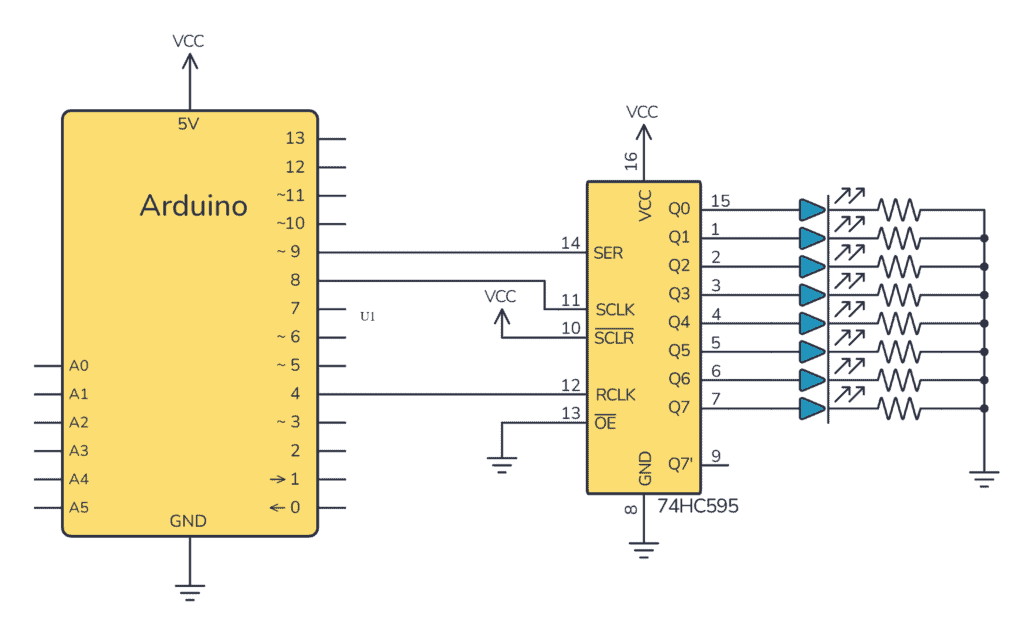
How To Use This Chip
The IC has a serial-in register, which means it receives data, either a 0 or a 1, serially (one bit at a time). The data goes into a shift register in the 595 that can contain 8 bits.

Since it’s a parallel-out register, you can then output those 8 bits all at once (in parallel). Here’s a diagram that shows how a basic serial-in parallel-out shift register is built with D Flip-Flops:
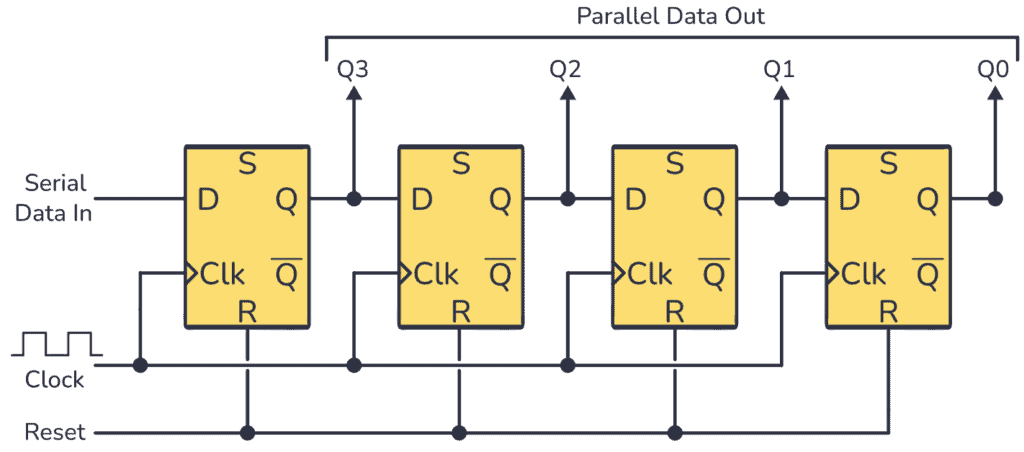
The 74HC595 also contains a storage register. To get the data from the shift register, you copy the contents of the shift register to the storage register by using pin RCLK.
Voltage and Current
The 74HC595 comes in a 16-pin package. You need to connect it to power before you can use it. Most 7400 ICs support a VCC voltage of 5V. One difference between the HC and LS versions of this chip is that the 74HC595 supports 2V to 6V, while the 74LS595 only supports 5V.
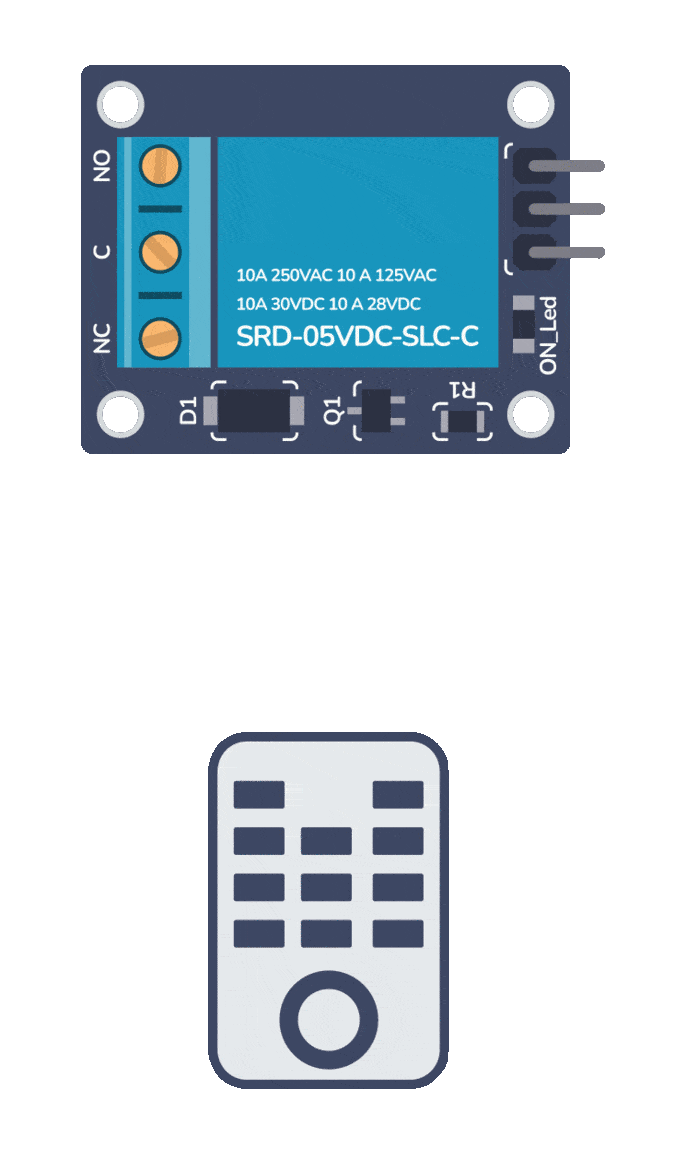
Build Something Useful This Evening
This gadget lets you use any IR remote-control to control your lamp, garden lights, heater oven, garage door, or anything else.
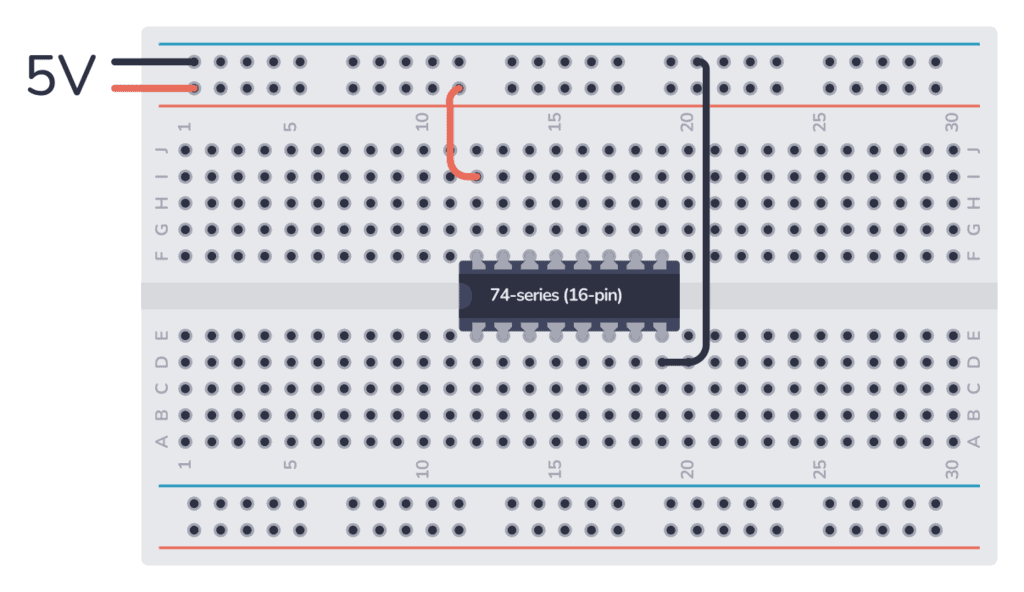
The output pins of the 74HC595 can drive up to 6 mA (both sourcing or sinking current) when the chip is powered with 5V.
The 74LS595 on the other hand can only drive about 2.6 mA when the output pin is high (sourcing), but up to 24 mA when the output pin is low (sinking).
Note that this can differ between manufacturers, so check the datasheet of your model to verify.
74HC595 Pinout
A 74×595 chip has 16 pins as shown in the pinout diagram below:
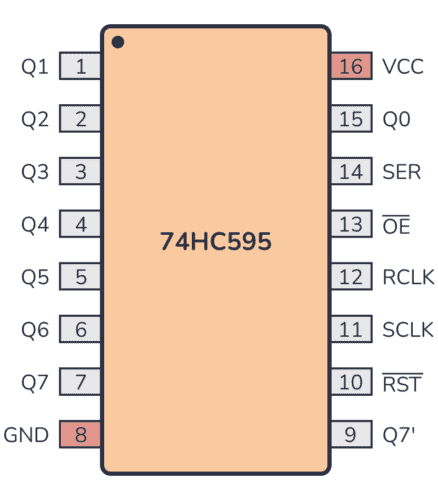
| Pin Name | Pin # | Type | Description |
|---|---|---|---|
| Q1 | 1 | Output | Parallel data out. |
| Q2 | 2 | Output | Parallel data out. |
| Q3 | 3 | Output | Parallel data out. |
| Q4 | 4 | Output | Parallel data out. |
| Q5 | 5 | Output | Parallel data out. |
| Q6 | 6 | Output | Parallel data out. |
| Q7 | 7 | Output | Parallel data out. |
| GND | 8 | Power | Connect to ground (GND). |
| Q7′ | 9 | Output | Output for daisy-chaining several 595s |
| /RST | 10 | Input | Reset/Clear the shift register |
| SCLK | 11 | Input | Shift register clock signal |
| RCLK | 12 | Input | Storage register clock signal (also called ‘Latch’) |
| /OE | 13 | Input | Output Enable (When HIGH, outputs are disabled). |
| SER | 14 | Input | Serial data input. |
| Q0 | 15 | Output | Parallel data out. |
| VCC | 16 | Power | Positive power supply (VCC). Connect to +5V power. |
The shift register clock (SRCLK) and storage register clock (RCLK) trigger on the rising edge of the signal. If these clocks get the same clock signal, the shift register will lead the storage register by one clock pulse.
Alternatives and Equivalents for 74HC595 / 74LS595
There are many versions of the 74×595 chip. They all have the same functionality but with different specifications such as supported voltages and maximum current output.
Here’s a list of a few equivalents of this chip:
- 74HC595 (High-speed CMOS)
- 74HCT595 (High-speed CMOS, TTL compatible)
- 74HCS595 (Schmitt trigger inputs)
- 74LS595 (High-speed TTL)
- 74LV595 (Low Voltage TTL)
- 74LVC595 (Low Voltage TTL)
- 74AHCT595 (Advanced High-speed CMOS, TTL compatible)
- 74AHC595 (Advanced High-speed CMOS)
- 74AC595 (Advanced CMOS)
- 74ALS595 (Advanced Low-Power Schottky TTL)
- 74F595 (Very High Speed)
- 74C595 (CMOS, similar to the 4000-series)
- 74VHC595 (Very High-speed CMOS)
- 74VHCT595 (Very High-speed CMOS, TTL compatible)
Some manufacturers also add a prefix, such as the SN74HC595 and SN74LS595 by Texas Instruments.
Can’t find the 74×595 anywhere? Then try one of the following IC alternatives:
- 74×164 – 8-bit serial-in parallel-out shift register.
- 74×594 – 8-bit serial-in parallel-out shift register (buffered).
- 74×596 – 8-bit serial-in parallel-out shift register (open-collector).
- 74×599 – 8-bit serial-in parallel-out shift register (open-collector).
- CD4035 – 4-stage parallel-in/parallel-out shift register.
If you can’t find the 74×595 IC in your local electronics store, don’t worry, you’ll most likely find it in one of the stores listed on this page of online stores where you’ll find components and tools for all your electronics projects.
Datasheet for the 74LS595 and 74HC595 chips
Download the PDF datasheet for your version of the 74×595 here:
- SN74HC595 (Texas Instruments)
- SN74LS595 (Texas Instruments)
- 74HC595 (Futurlec)
- 74HC595 (Diodes Inc)
- 74HC595 (Nexperia)
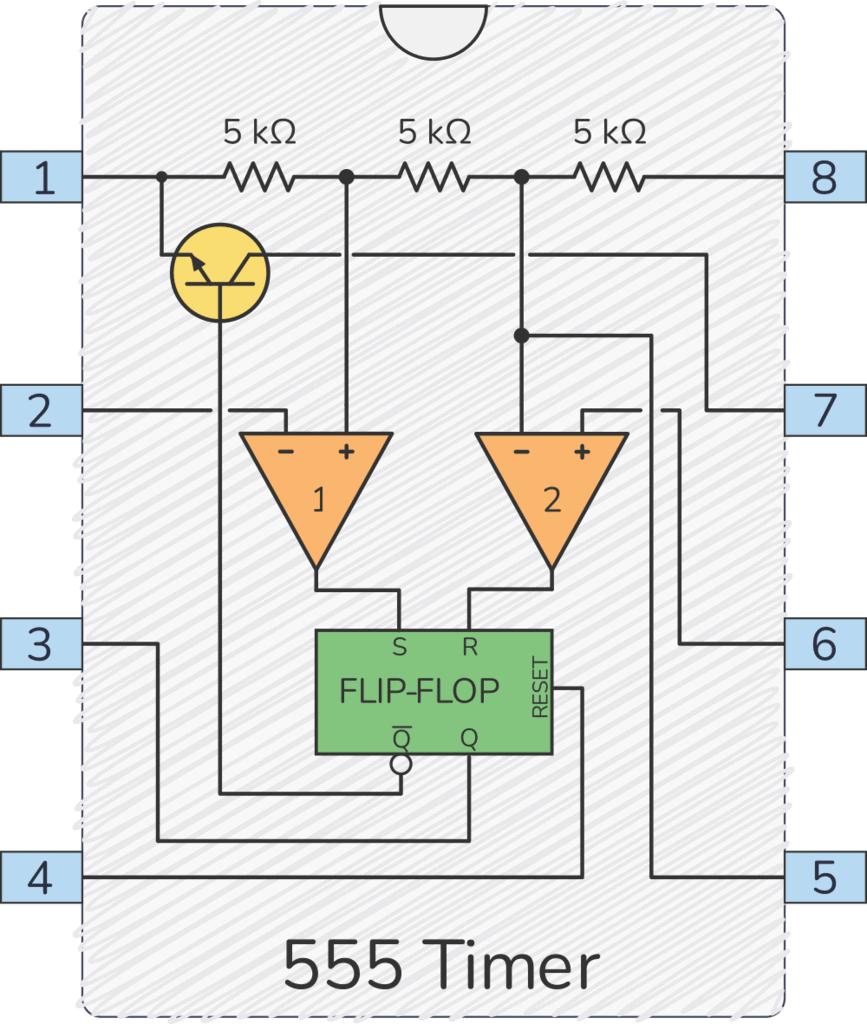
Get the 555 Timer Cheatsheet
A super helpful reference that makes it easy to design circuits, so that you can build oscillators, timer circuits, and more in no time.

